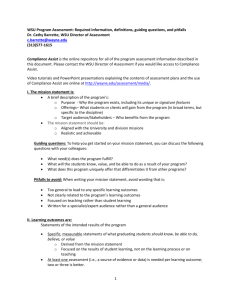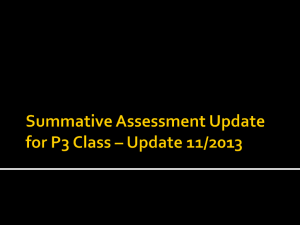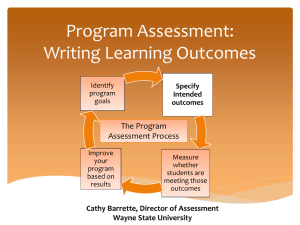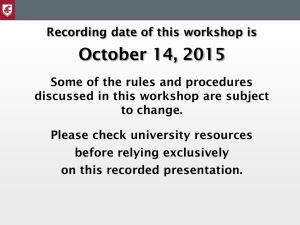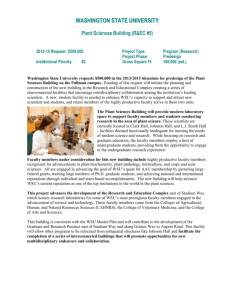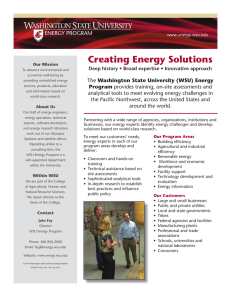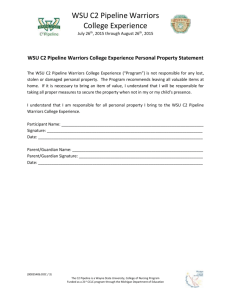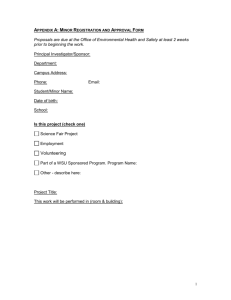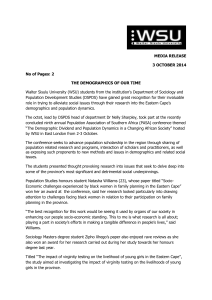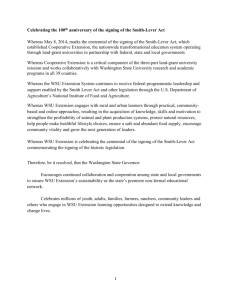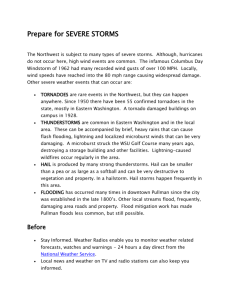The Program Assessment Cycle
advertisement
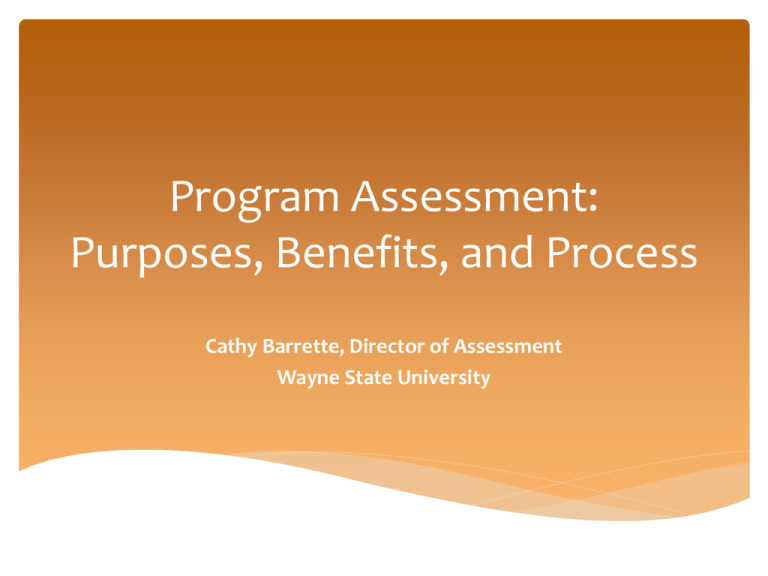
Program Assessment: Purposes, Benefits, and Process Cathy Barrette, Director of Assessment Wayne State University Program Assessment is like Google Maps You have to know where you’re starting from and where your final destination is before you can choose the best route. Landmarks along the way show you that you’re on the right track. What is Program Assessment? Specification and measurement of learning outcomes to understand how well program goals are being met Learning outcomes: What students know, value, and can do Program goals: The big-picture objectives of the program Ongoing, cyclical process Data-driven Purposes of Program Assessment Diagnose what is working well, what could be better Reform/Revise the curriculum or program effectively Maintain WSU’s accreditation Benefits of Program Assessment For students: A better learning experience, more effective development of competencies, knowledge and skills For faculty and staff: Useful information for communicating program successes and needs to stakeholders Recruitment, retention, and funding tool Effective use of time dedicated to curricular reform Additional evidence of effective teaching and programs Benefits of Program Assessment For departments and programs Great information for newsletters to alumni, community members, potential donors Useful in articulating future program directions when seeking more resources and funding For WSU Accreditation Recruitment External funding Identify/ review program goals Specify intended outcomes The Program Assessment Cycle Assessment Cycle Improve the program based on results Measure whether students are meeting those outcomes WSU Program Assessment Process 1. Mission statement: Big picture goals 2. Learning outcomes: Concrete, measurable elements that contribute to the mission statement 3. Evidence/Data collection Assessments: The “yardsticks” used to measure learning outcomes; can often be drawn from what you already do WSU Program Assessment Process 4. Data analysis, interpretation and reporting 5. Use results: Action planning and implementation 6. Cycle through the process again (Document everything in Compliance Assist.) Documentation of Program Assessment Compliance Assist is the online repository for all of our program assessment information. Contact the Director of Assessment for access and training. MS Word versions of the questions in Compliance Assist are also available as a tool for drafting responses. Programs must copy and paste responses to Compliance Assist. Want More Information? Additional presentations explain how to: Write mission statements Write learning outcomes and curriculum maps Choose assessments Understand and use results from the assessments Use Compliance Assist to record your work Each part has examples and pitfalls to avoid as well! Local Resources for Program Assessment Cathy Barrette, WSU Director of Assessment c.barrette@wayne.edu (313)577-1615 4129 F/AB WSU Assessment website (temporary url) http://undergrad.wayne.edu/assessment.php OTL staff, workshops and website: http://otl.wayne.edu/
